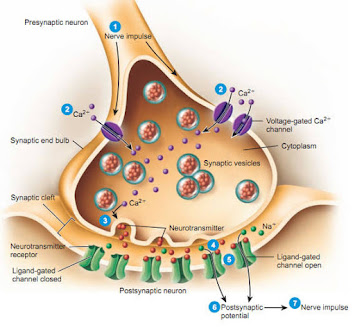The brain has possibly 100 billion neurons, each of which connects to up to 10,000 (typically) other neurons. By some estimates, there are over 100 trillion total connection points or "synapses" in the human brain.
As information flows through the neural circuits and networks of the brain, the activity of the neurons causes the connection points to become stronger or weaker in response. Our brain encodes memories by altering or changing the strength of synapses(synaptic plasticity), or connections between neurons. The mechanism behind this is called "long-term potentiation" or "LTP" This requires interactions of many proteins found in both presynaptic neurons, which send information about an event, and postsynaptic neurons, which receive the information.
By strengthening and weakening the connections between synapses(the terminal of neuron) our brain stores information(memories). Now the question is how our brain strengthens and weakens connections between synapses. It is done by building or reducing neuroreceptors at synapses.
AMPA receptor(the blue one) is the most common neuroreceptor that is mostly installed or reduced. The number of neuroreceptors at a synapse determines memory storage.
Now coming back to main question-Does human memory has mass?
As these neuroreceptors are made up of hundreds of thousands of protein molecules which are basically chains of amino acids and the average molecular weight of an amino acid is 110Da or 110 X 1.66X10–27 Kg. As memory is basically the strength of connections between synapses which is maintained by these neuroreceptors. More the neuroreceptors, more strong is the connection and more will the memory.
Since neuroreceptors(which represent memory) have mass(although it is negligible) so we can say that memories also have mass.
Thanks for reading






0 Comments